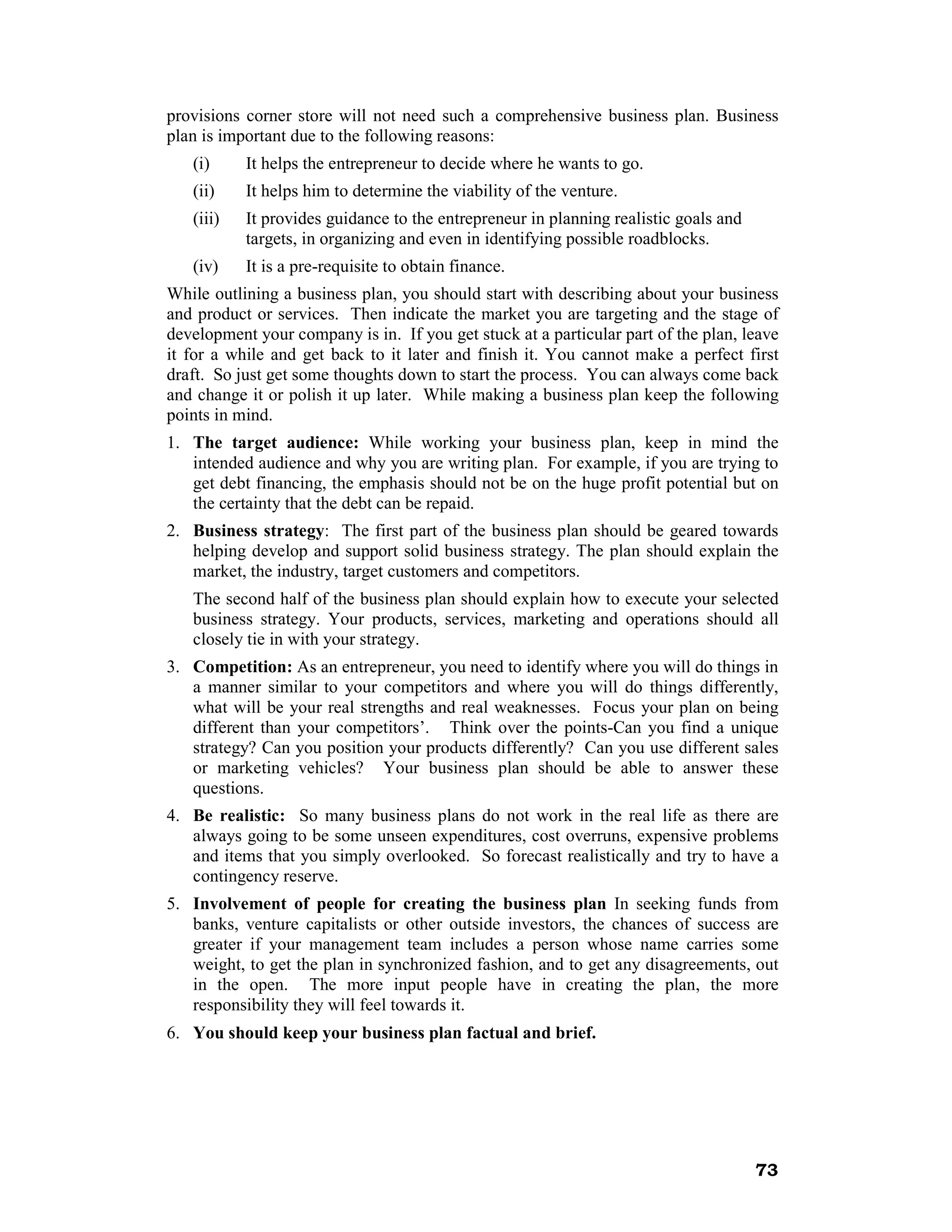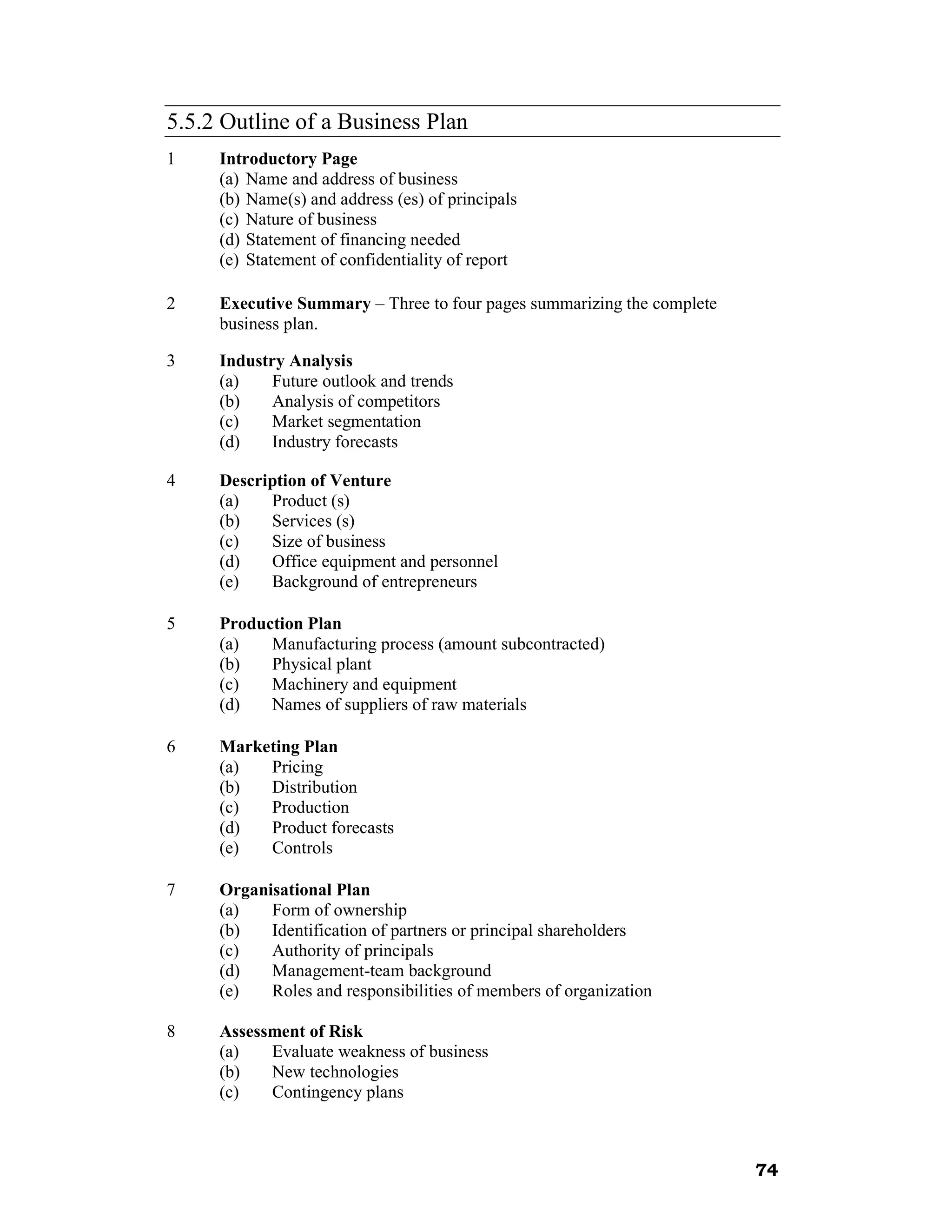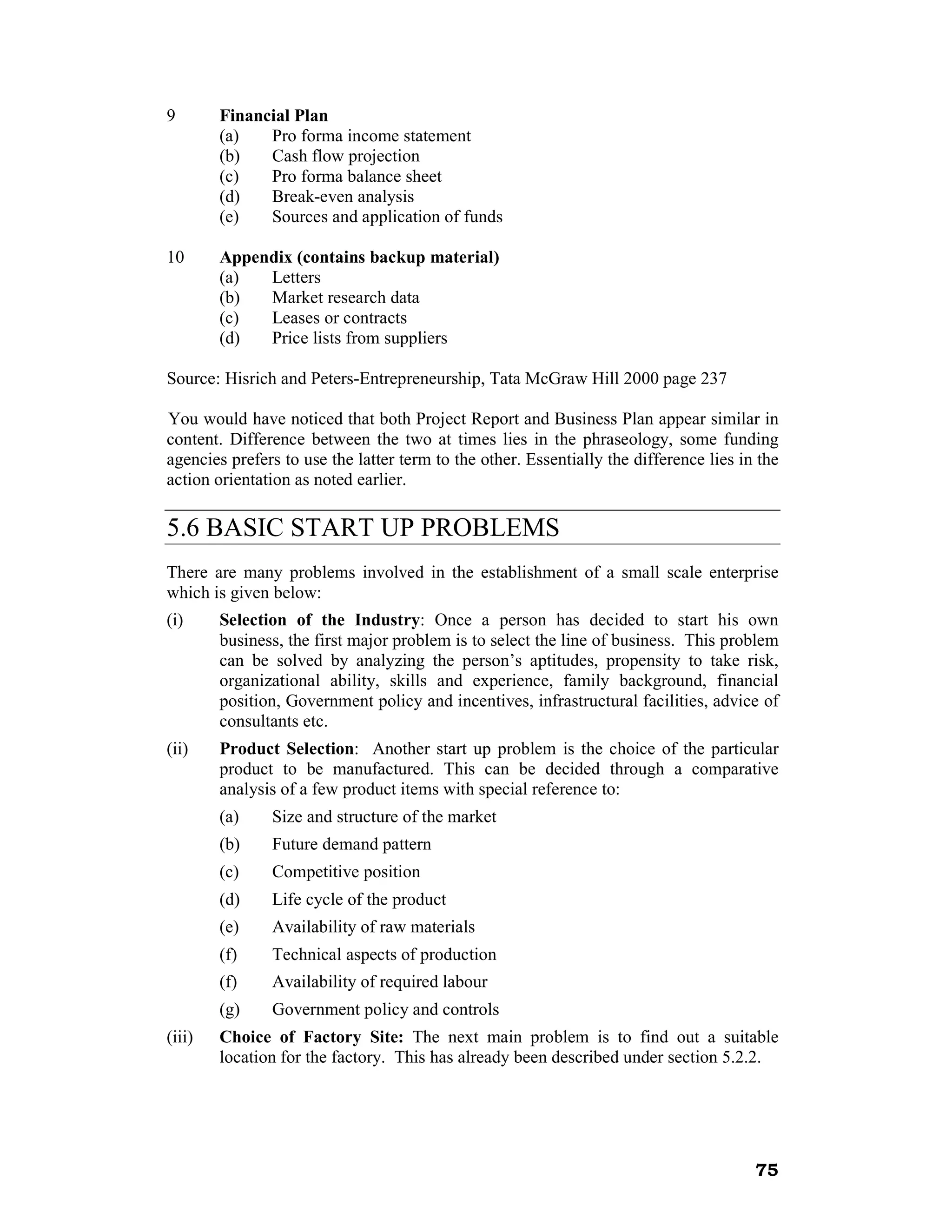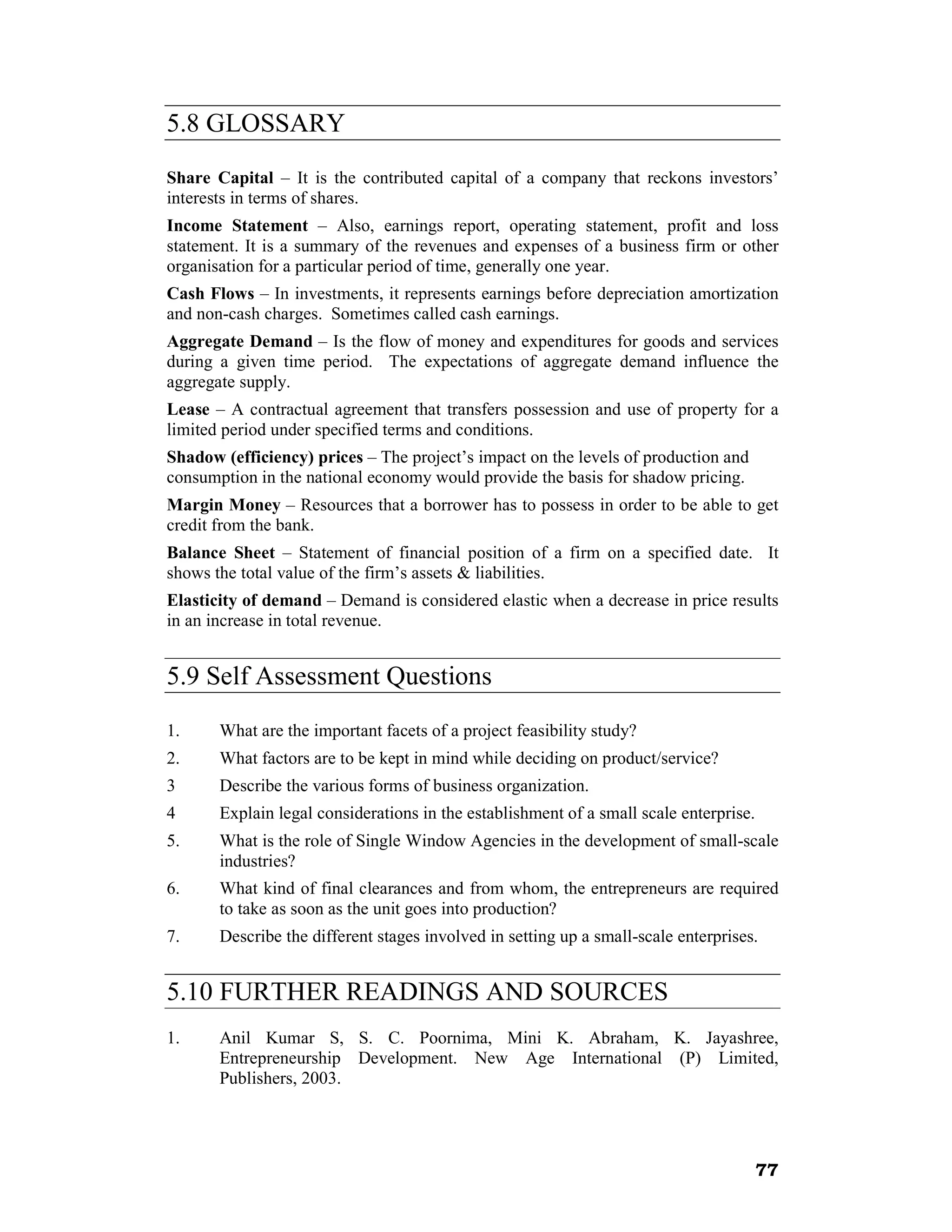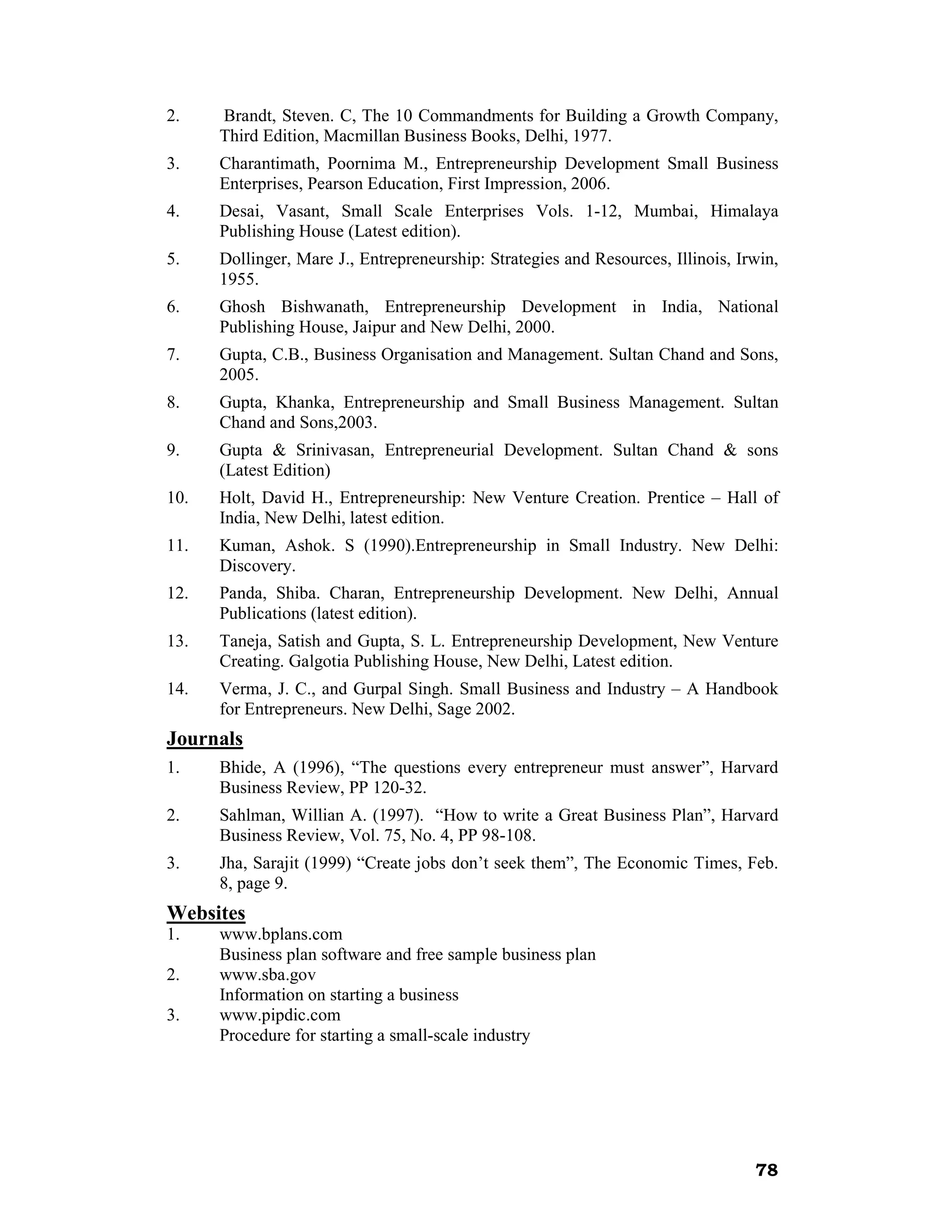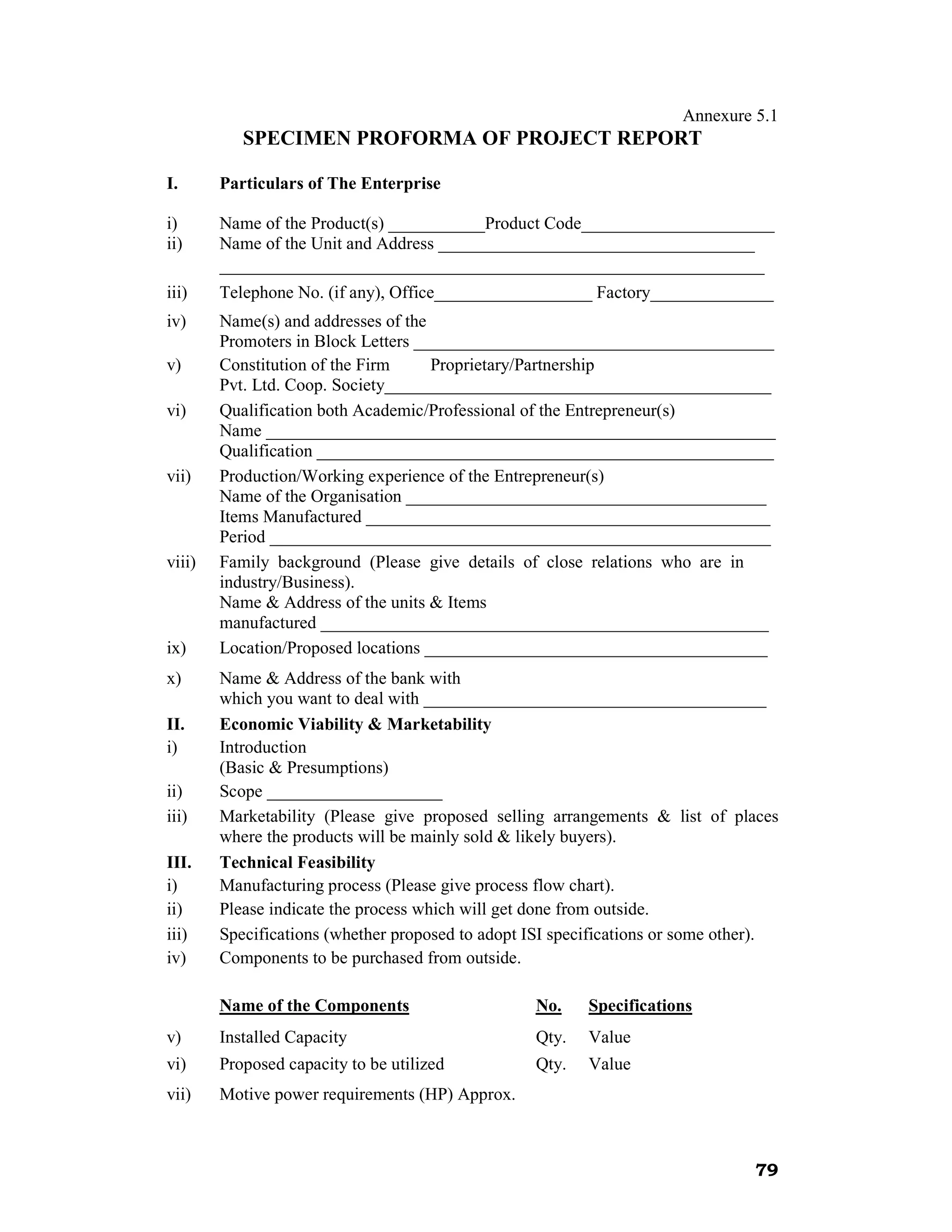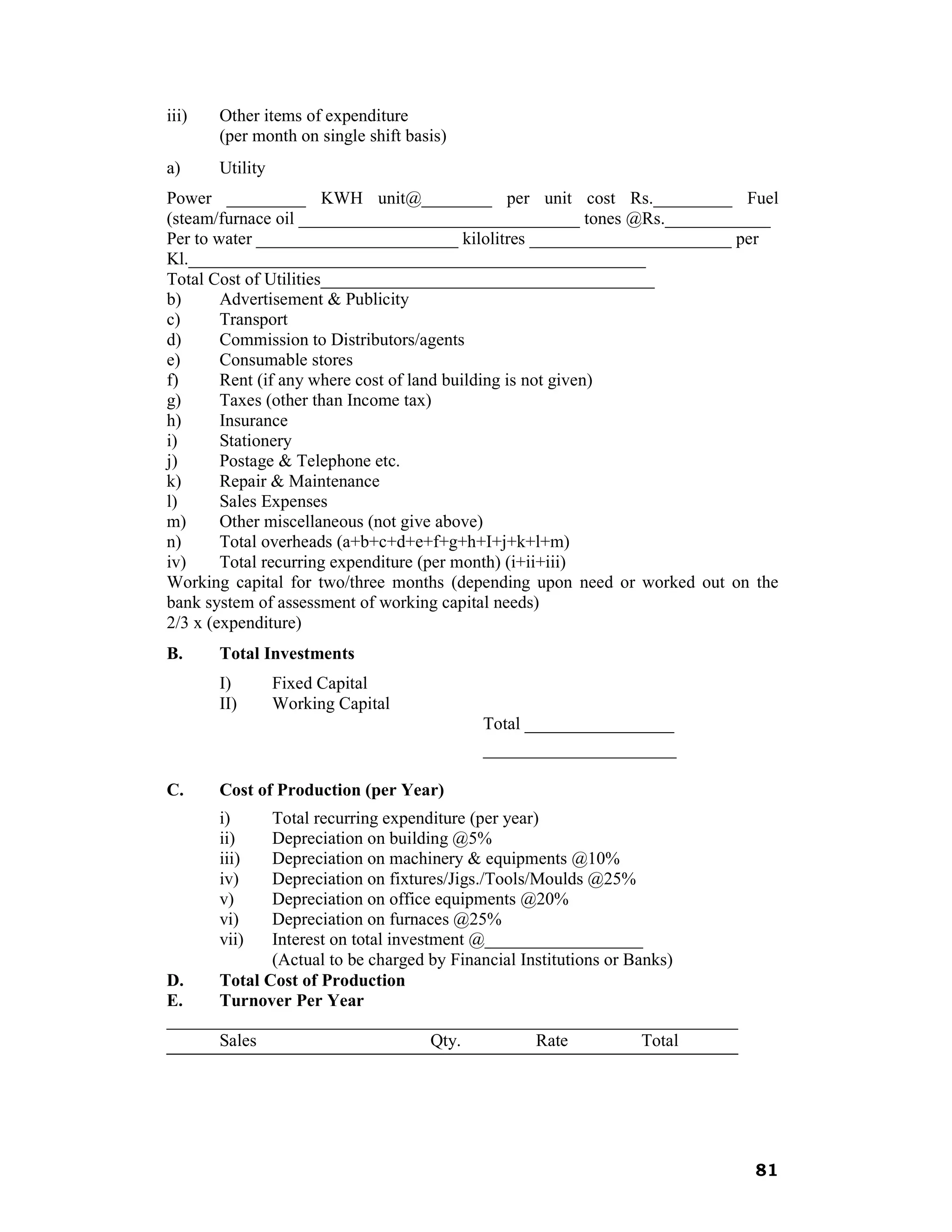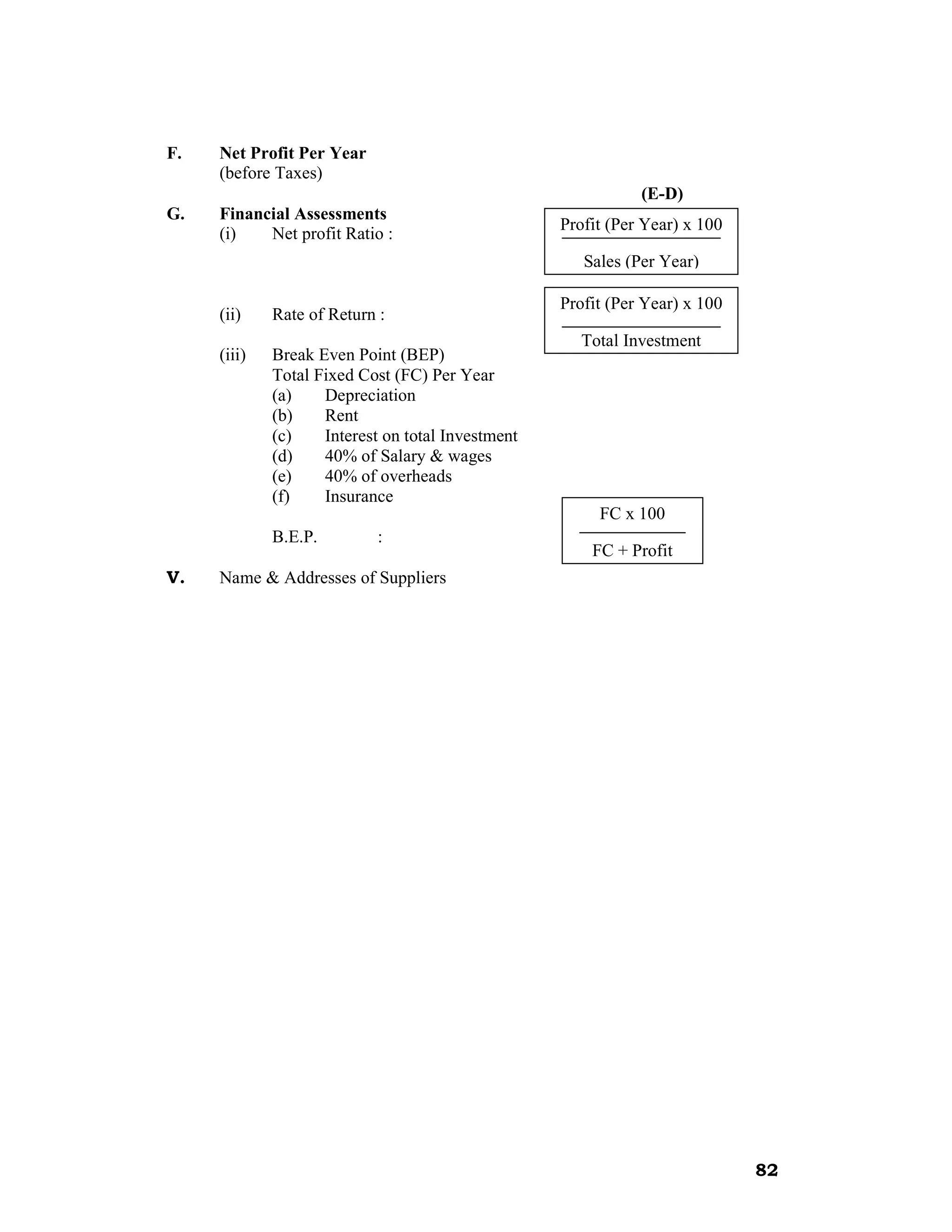This document provides an overview of conducting a feasibility analysis, preparing a project report, and developing a business plan for a new business venture. It discusses the key components of a feasibility analysis including market analysis, financial analysis, technical analysis, economic analysis, ecological analysis, and legal/administrative analysis. It also describes how to compile the findings of the feasibility analysis into a project report. The document outlines the process and requirements for registering a small-scale industry at both the provisional and permanent stages. Finally, it notes that a business plan serves as a roadmap for effectively starting a new business.
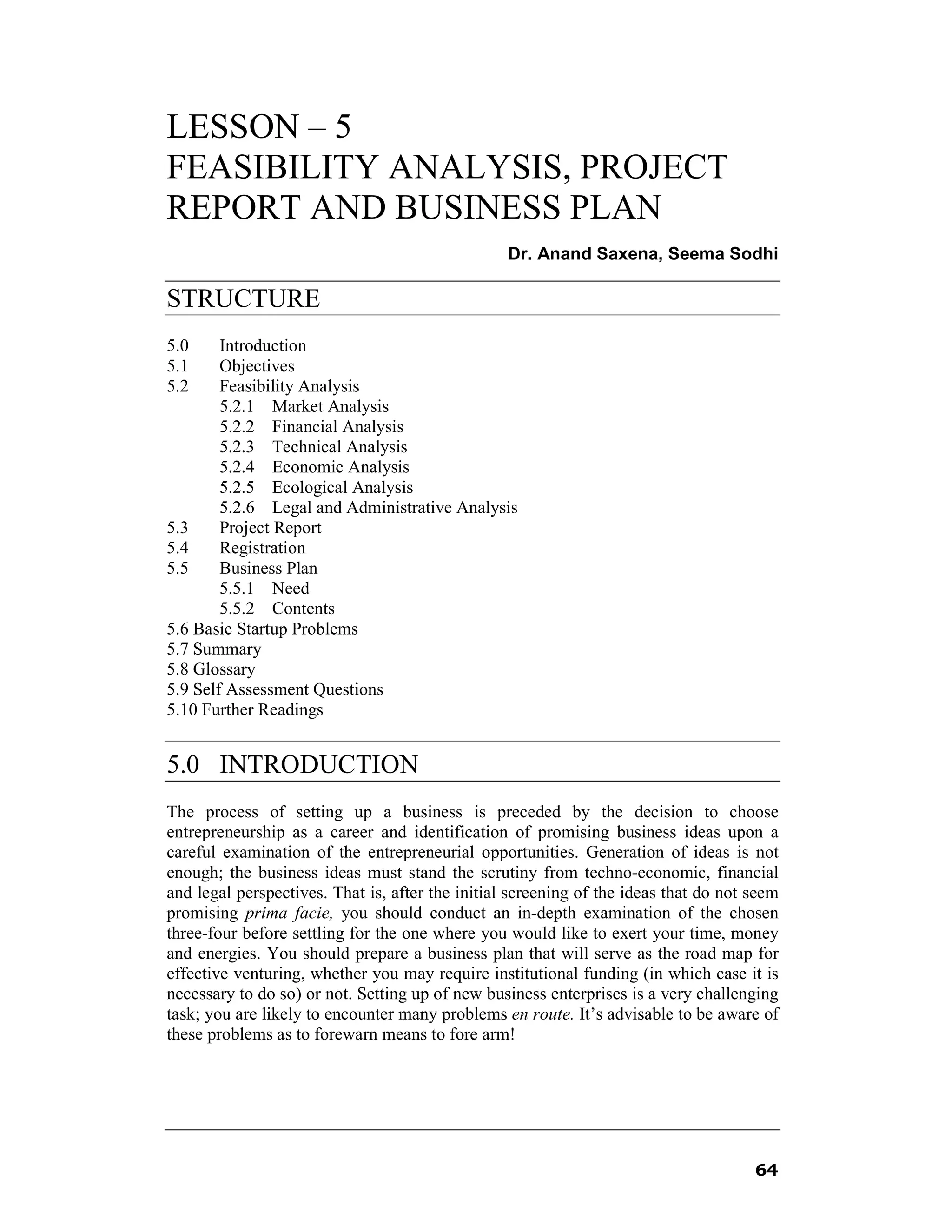

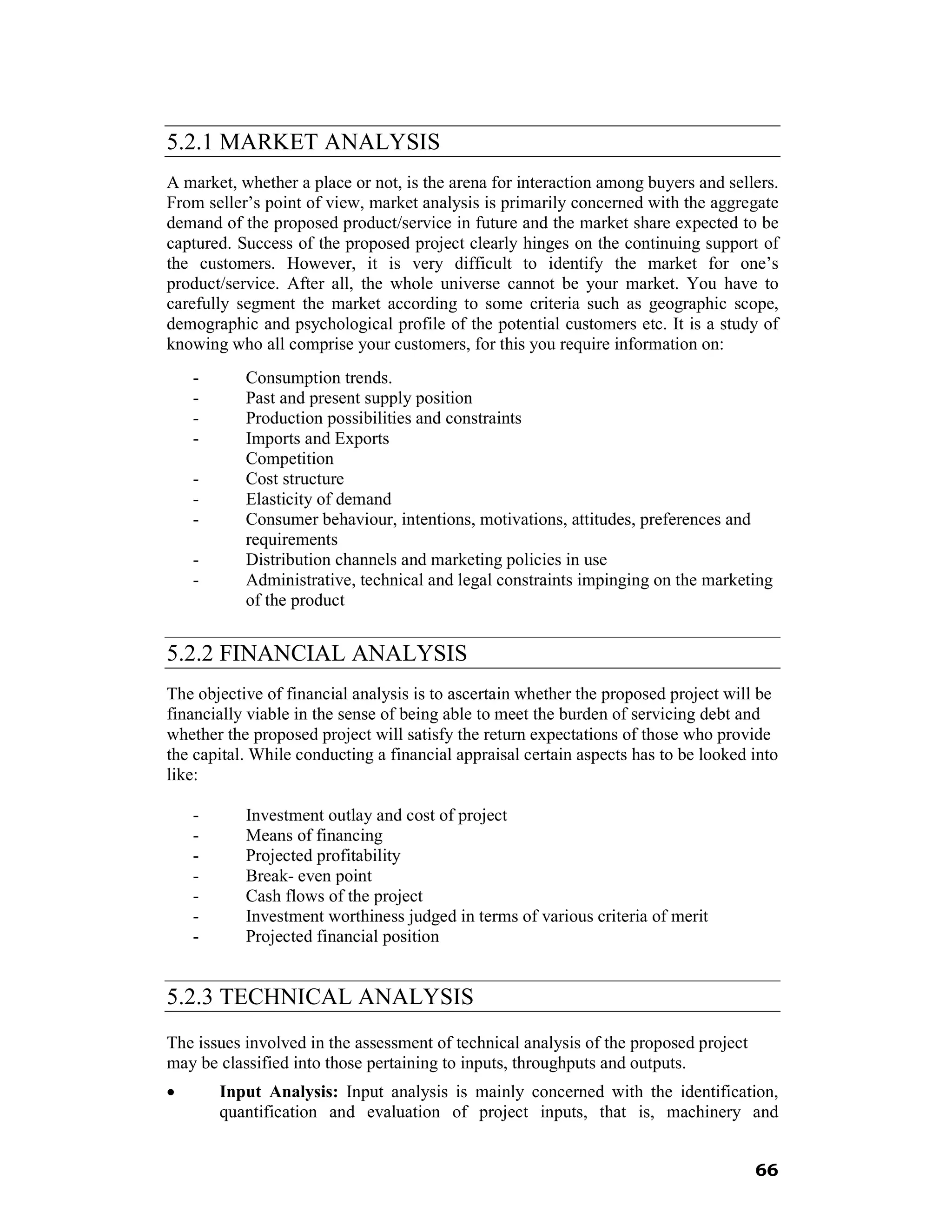
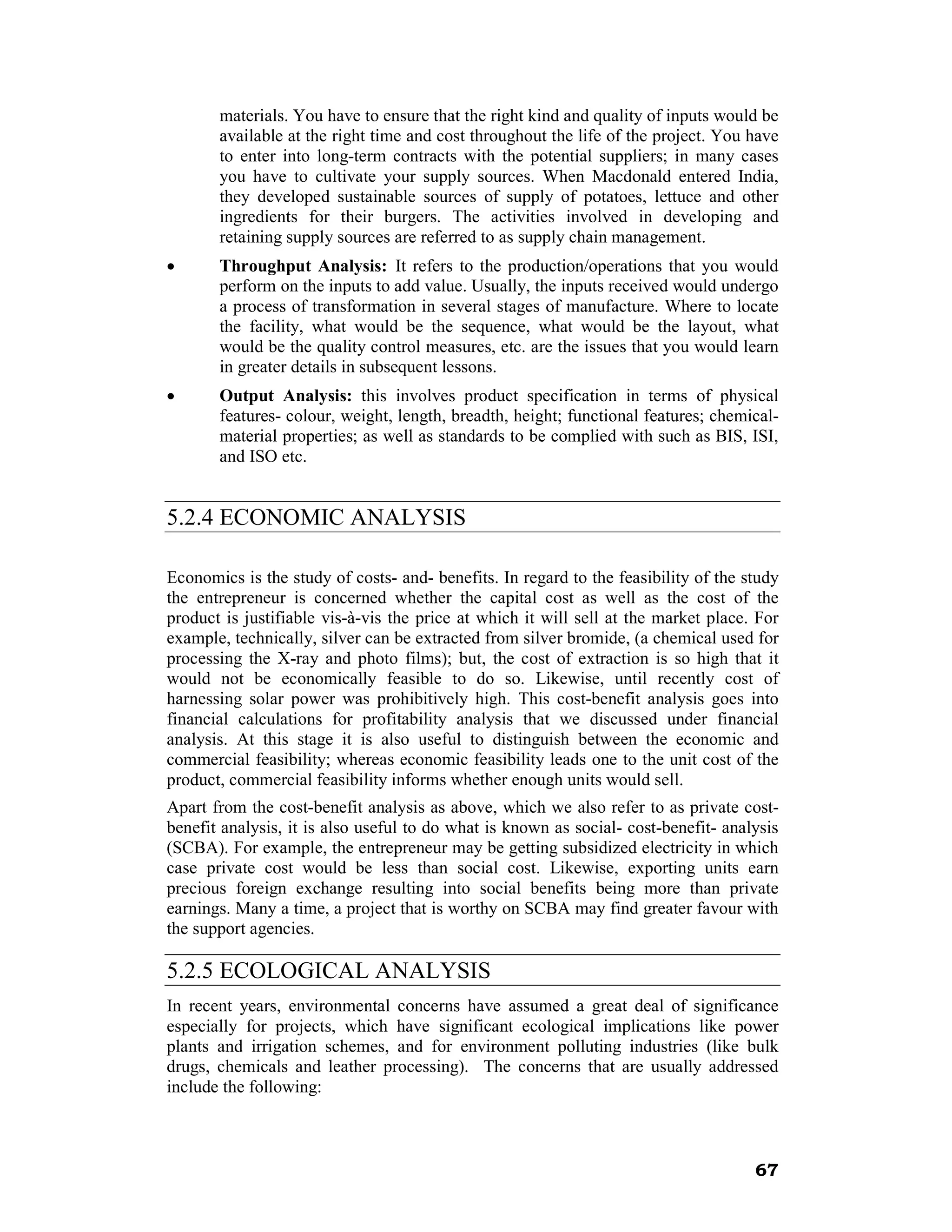
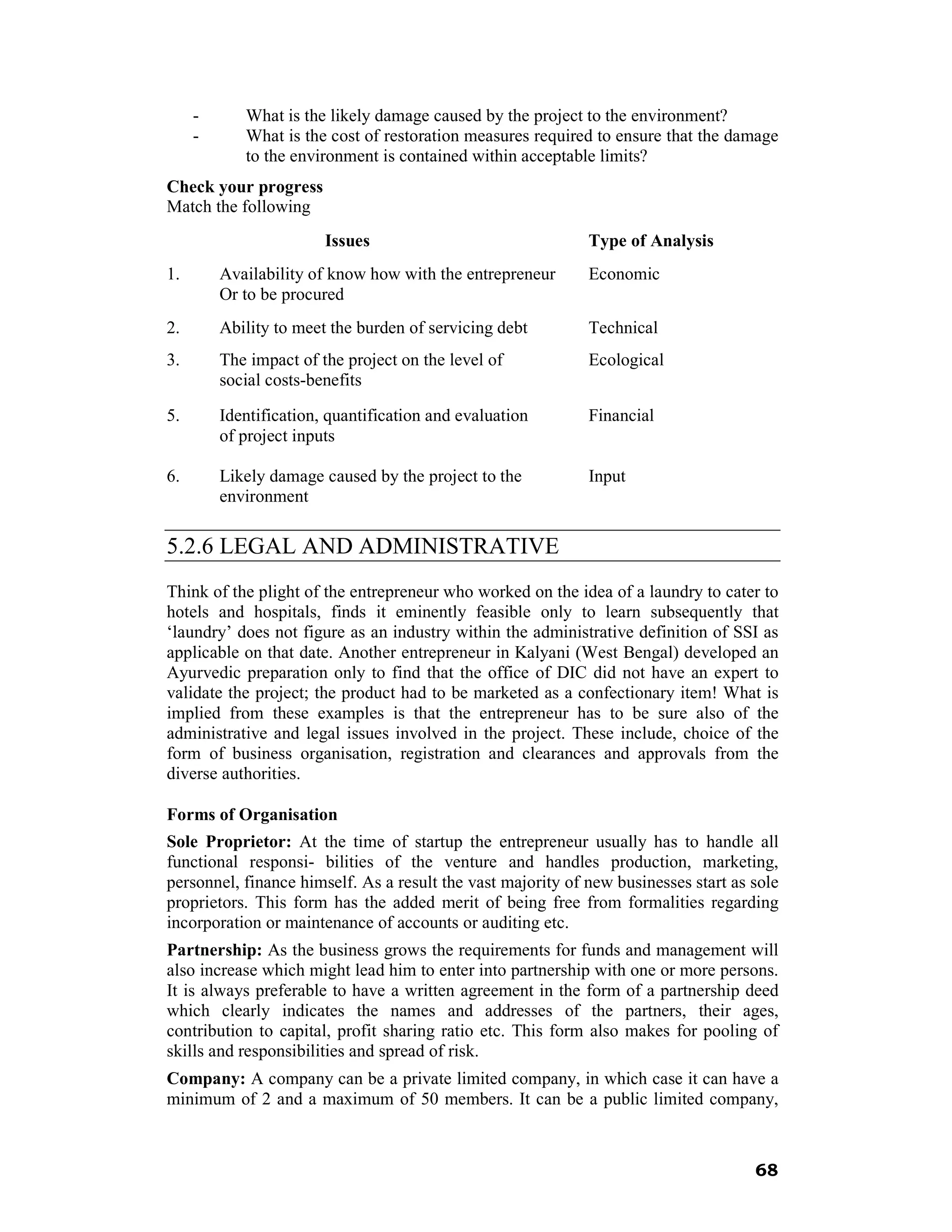
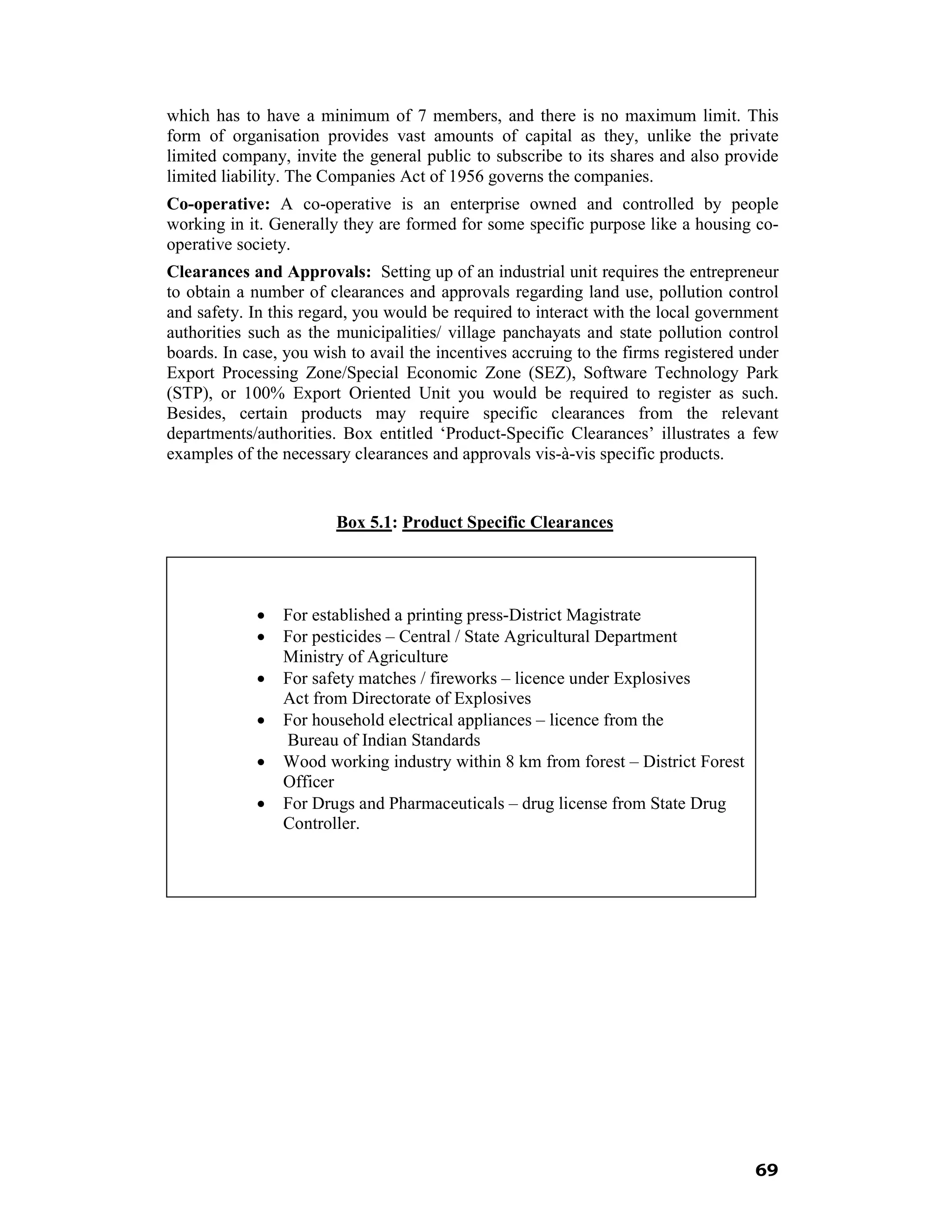

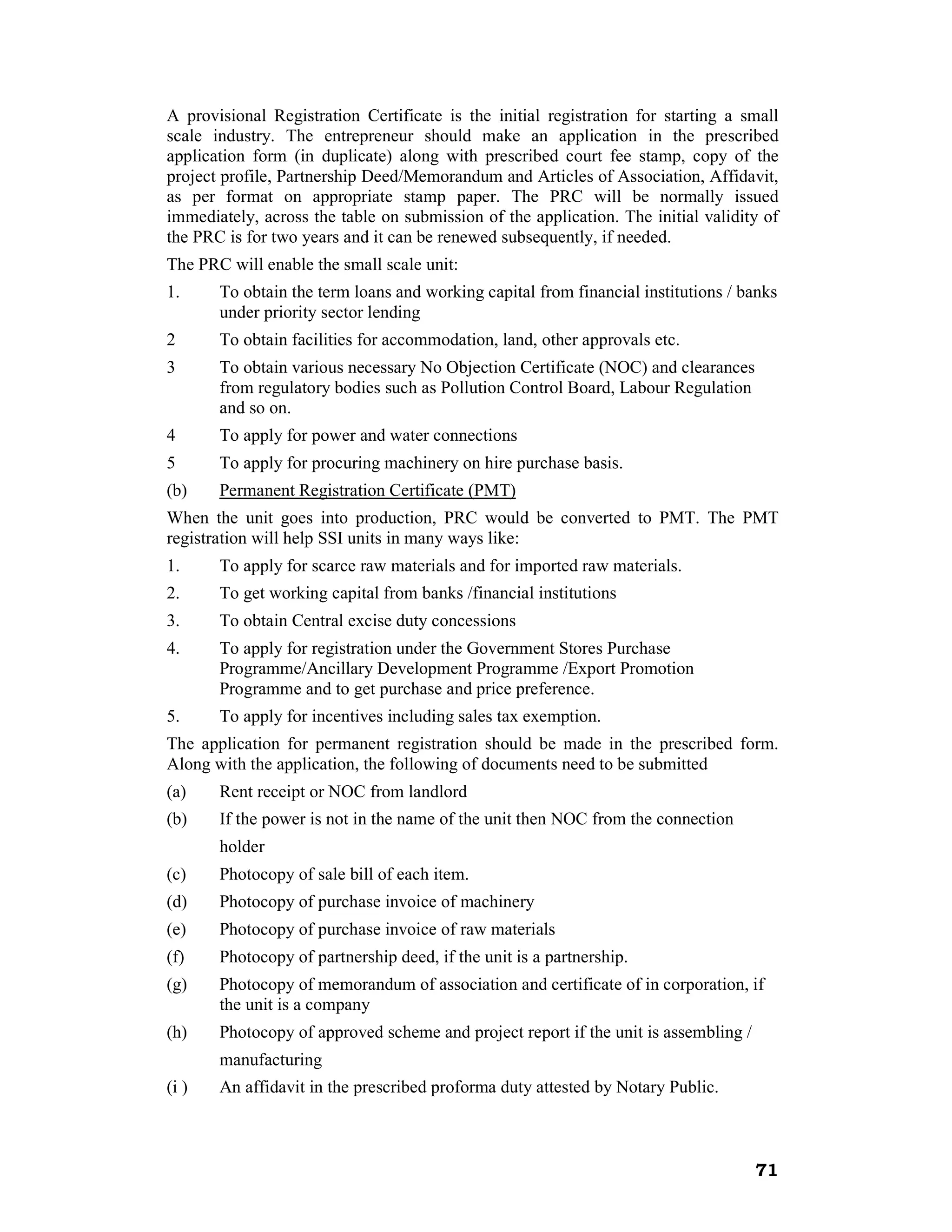
![A SSI can get itself registered with Director General of Supplies and Disposal
(DGS&D) or National Small Industries Corporation (NSIC) if it wants to avail of the
benefit of purchases made for government offices.
Check your progress
1. Pick up two keywords from the following 4 keywords, which are used in the
above section and explain them.
PMT, PMC, PRC, PRT
1. ________________________________
________________________________
2. ________________________________
________________________________
2. What is the full form of?
NOC ________________________________
DGS&D _______________________________
5.5 BUSINESS PLAN
The feasibility analysis of the chosen 3-4 project ideas would help you zero in on to
the one where you would like to commit yourself. Now, is the time to decide in
advance on how you intend to go about everything related to the launch of your
business and its subsequent operations? The difference between the feasibility report
and business plan essentially lies in ‘action orientation.’ As such, a business plan is a
blue print of entrepreneurial intentions.
The business plan is a written document that serves as a road map in the entrepreneur s
journey from start-up to project implementation. It describes all the relevant elements
involved in starting a new business enterprise. It is often an integration of functional
plans such as marketing, finance, manufacturing and human resources. Potential
investors and suppliers too are interested in a business plan, as it can prove helpful in
taking decisions.
5.5.1 NEED FOR A BUSINESS PLAN
The depth and detail of the business plan depends upon the size of the market, nature
of business [manufacturing/trading/service] and degree of competition. For, e.g., an
entrepreneur planning to market a new washing machine will need a comprehensive
business plan. On the other hand, an entrepreneur who plans to open a general
72](https://image.slidesharecdn.com/ep05-120509210642-phpapp02/75/Ep-05-9-2048.jpg)
